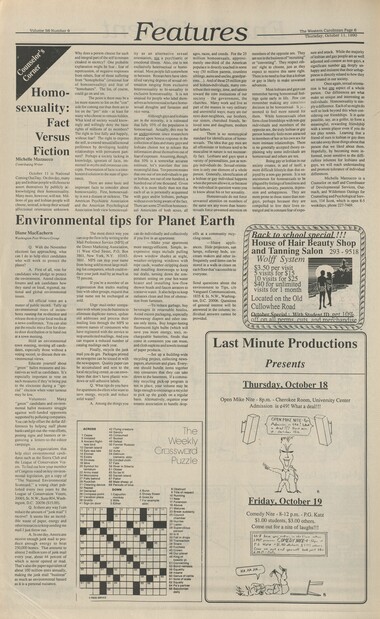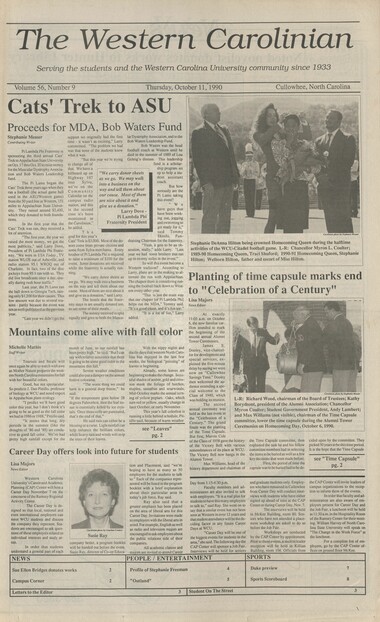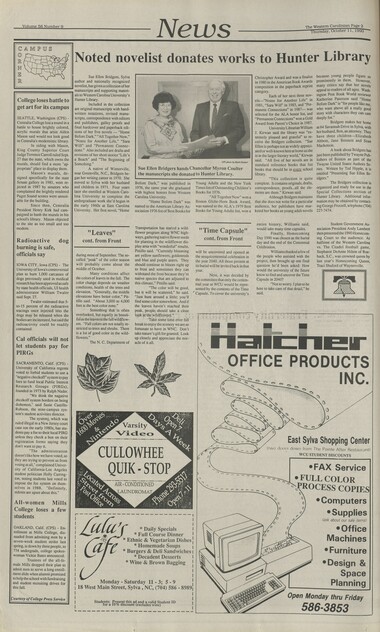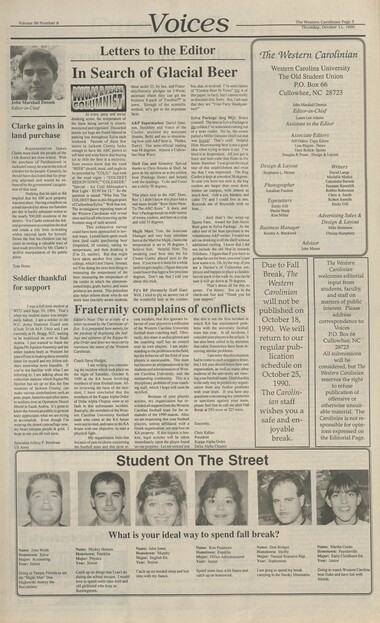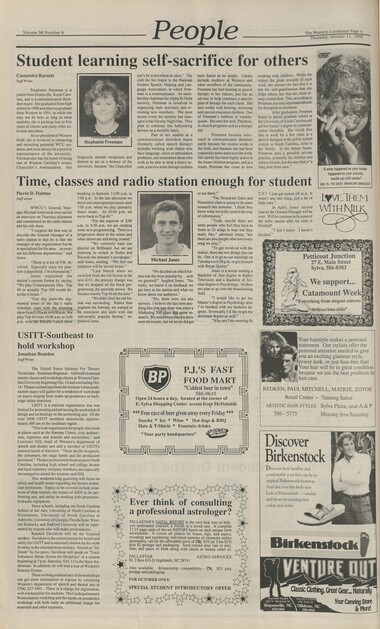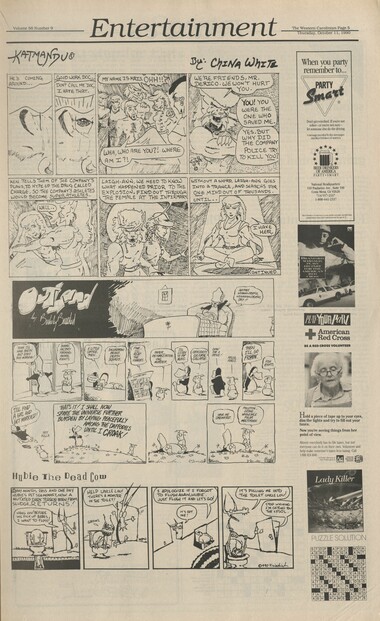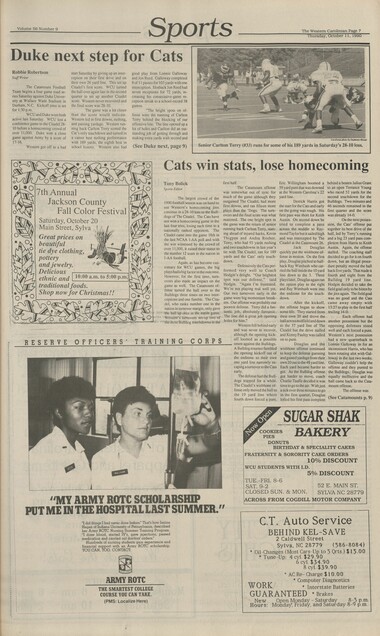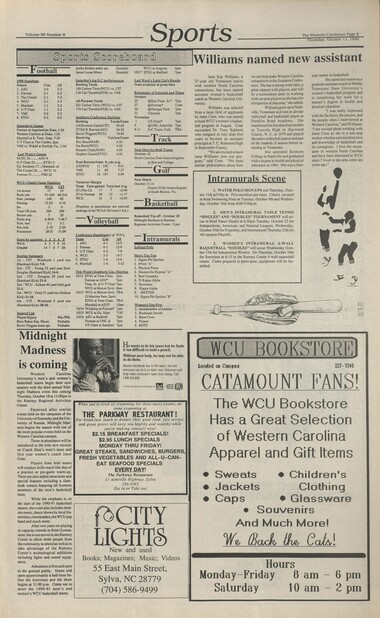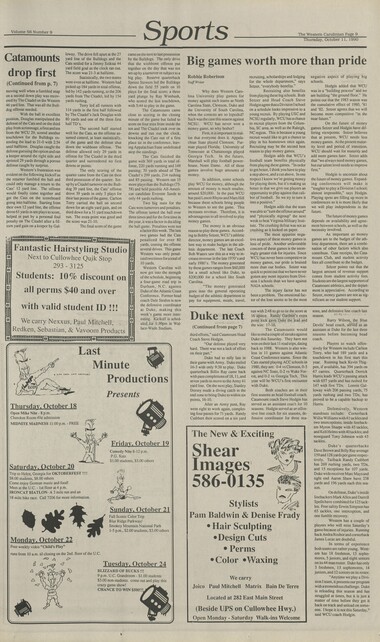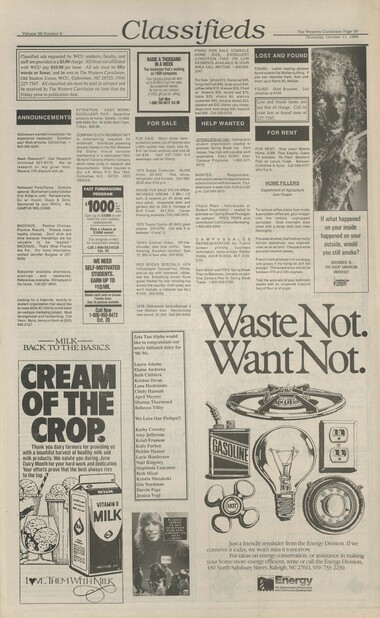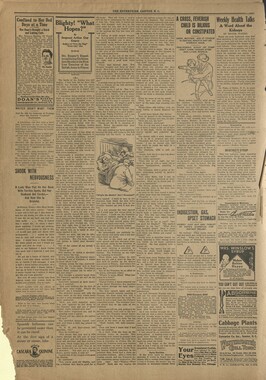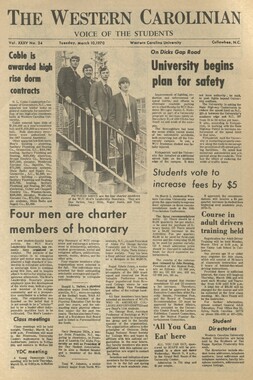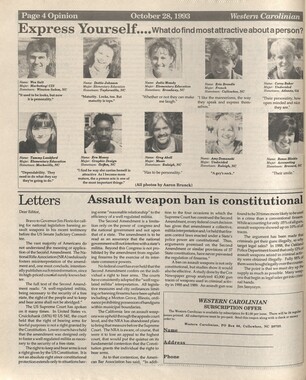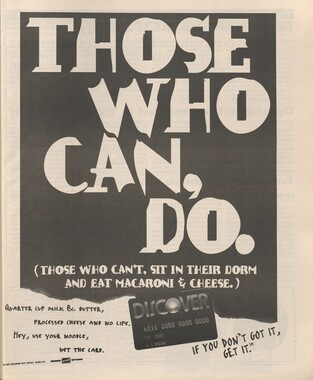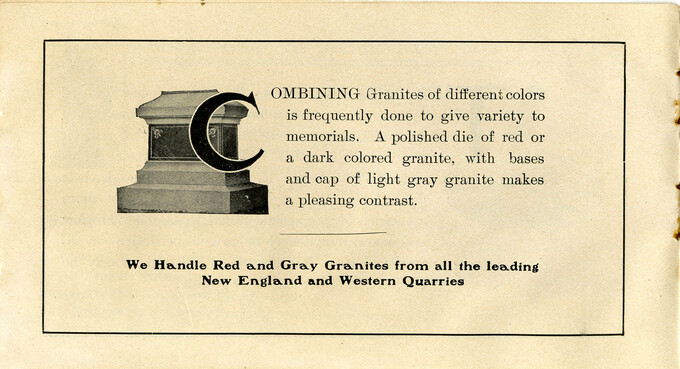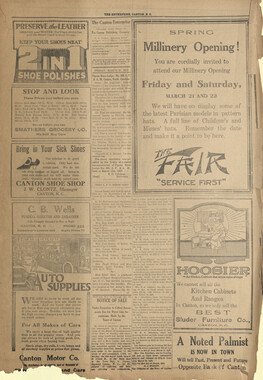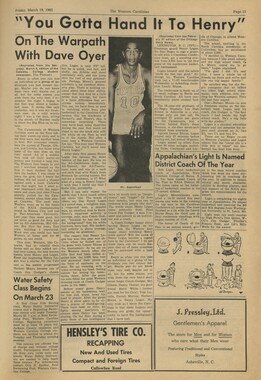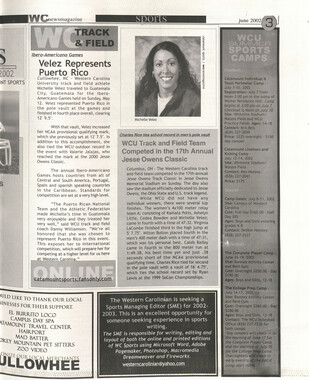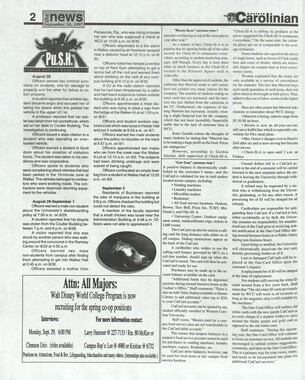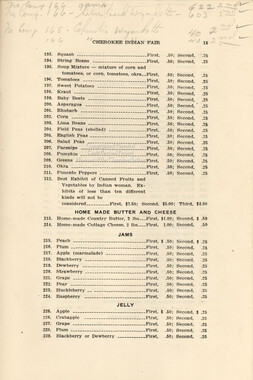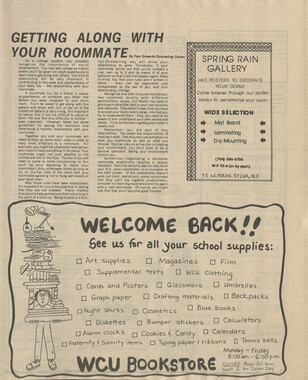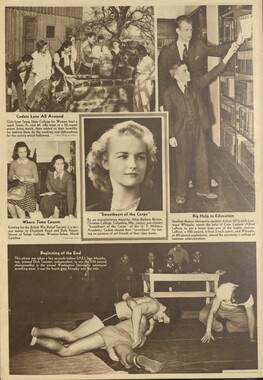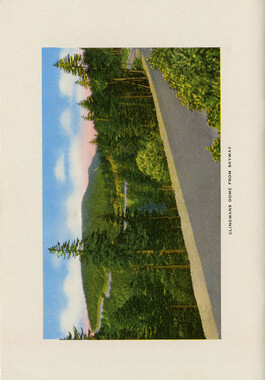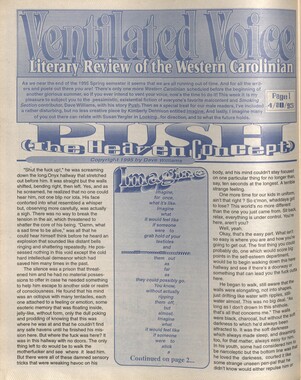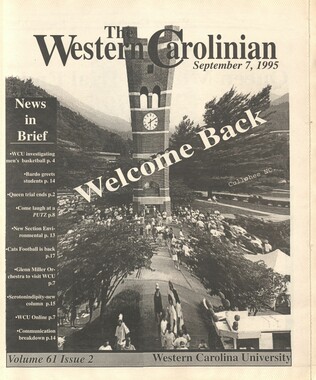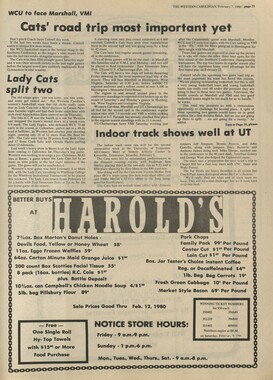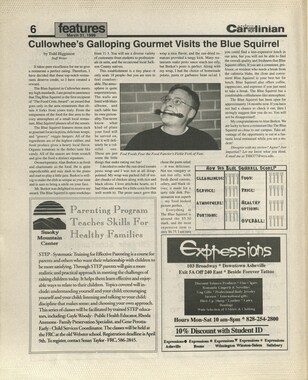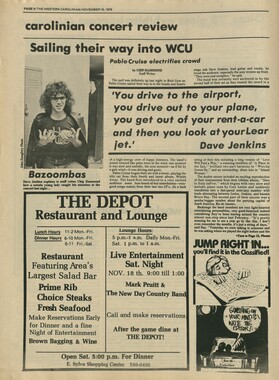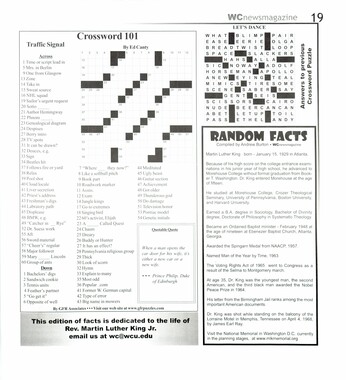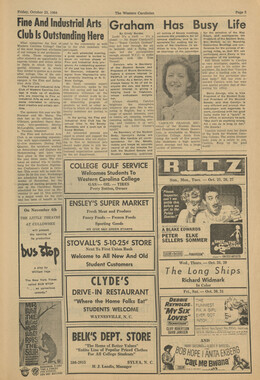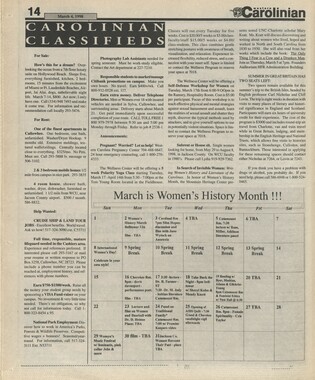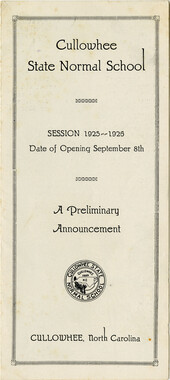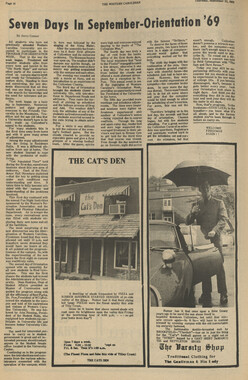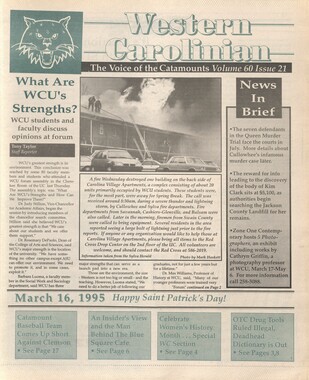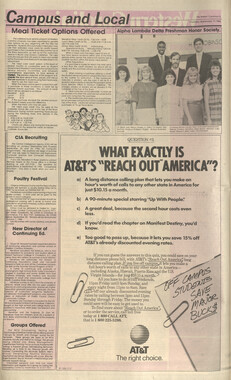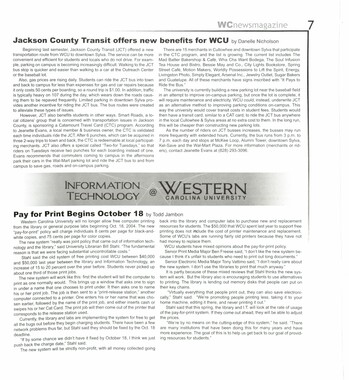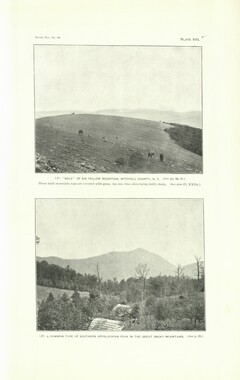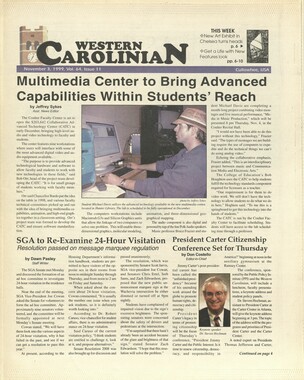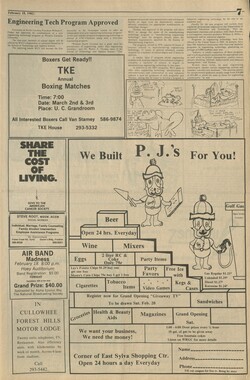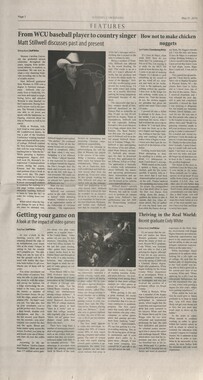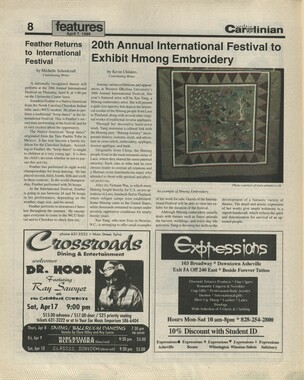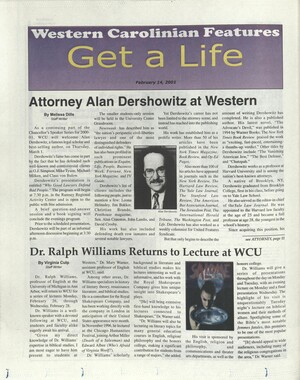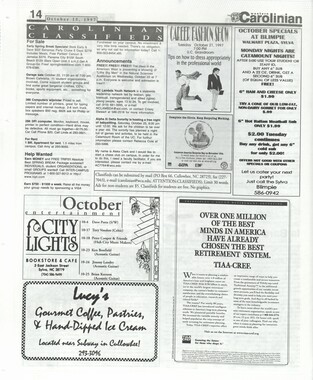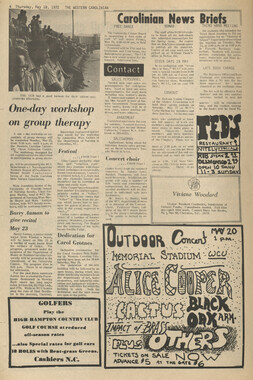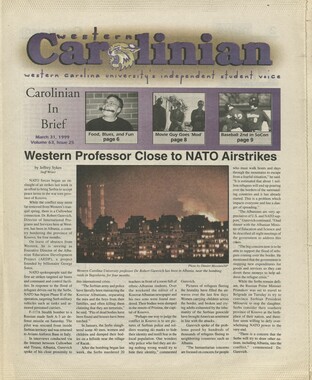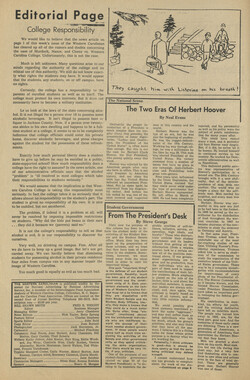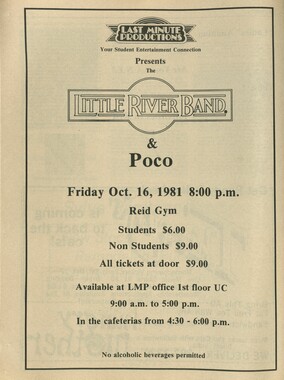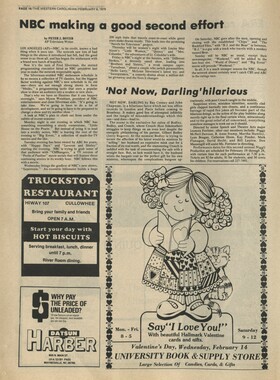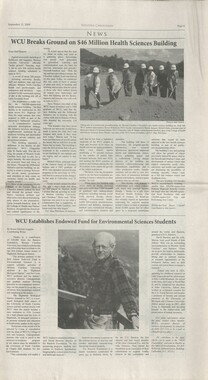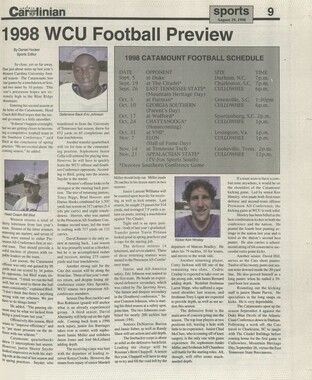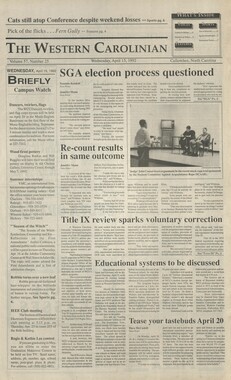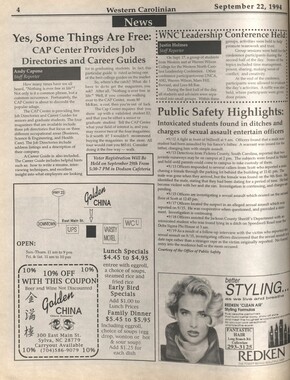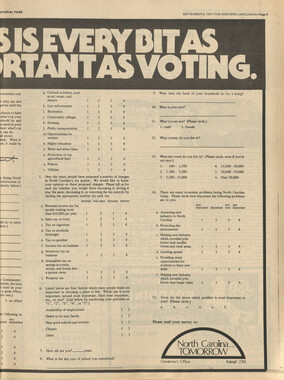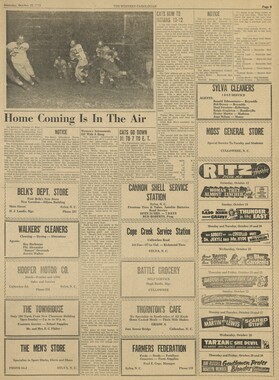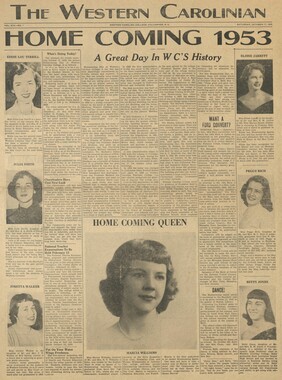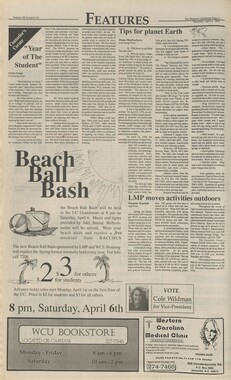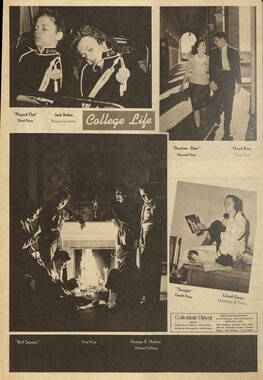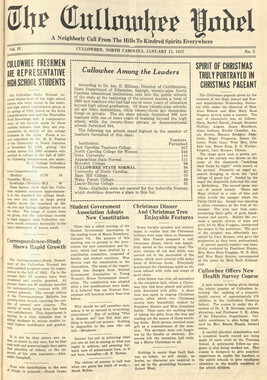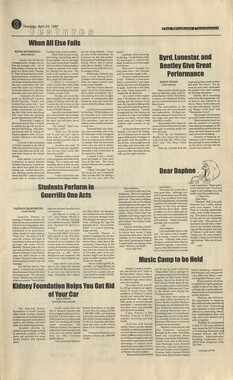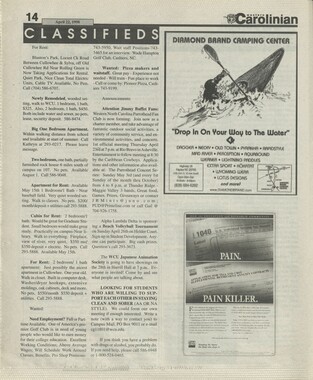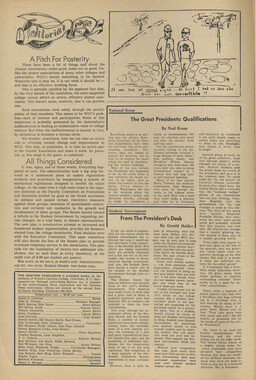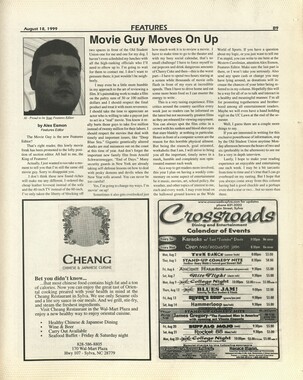Western Carolina University (21)
View all
- Canton Champion Fibre Company (2308)
- Cherokee Traditions (291)
- Civil War in Southern Appalachia (165)
- Craft Revival (1942)
- George Masa Collection (137)
- Great Smoky Mountains - A Park for America (3080)
- Highlights from Western Carolina University (422)
- Horace Kephart (998)
- Journeys Through Jackson (159)
- LGBTQIA+ Archive of Jackson County (90)
- Oral Histories of Western North Carolina (318)
- Picturing Appalachia (6617)
- Stories of Mountain Folk (413)
- Travel Western North Carolina (153)
- Western Carolina University Fine Art Museum Vitreograph Collection (129)
- Western Carolina University Herbarium (92)
- Western Carolina University: Making Memories (738)
- Western Carolina University Publications (2491)
- Western Carolina University Restricted Electronic Theses and Dissertations (146)
- Western North Carolina Regional Maps (71)
- World War II in Southern Appalachia (131)
University of North Carolina Asheville (6)
View all
- Allanstand Cottage Industries (62)
- Appalachian National Park Association (53)
- Bennett, Kelly, 1890-1974 (1463)
- Berry, Walter (76)
- Brasstown Carvers (40)
- Carver, George Washington, 1864?-1943 (26)
- Cathey, Joseph, 1803-1874 (1)
- Champion Fibre Company (233)
- Champion Paper and Fibre Company (297)
- Cherokee Indian Fair Association (16)
- Cherokee Language Program (22)
- Crowe, Amanda (40)
- Edmonston, Thomas Benton, 1842-1907 (7)
- Ensley, A. L. (Abraham Lincoln), 1865-1948 (275)
- Fromer, Irving Rhodes, 1913-1994 (70)
- George Butz (BFS 1907) (46)
- Goodrich, Frances Louisa (120)
- Grant, George Alexander, 1891-1964 (96)
- Heard, Marian Gladys (60)
- Kephart, Calvin, 1883-1969 (15)
- Kephart, Horace, 1862-1931 (313)
- Kephart, Laura, 1862-1954 (91)
- Laney, Gideon Thomas, 1889-1976 (439)
- Masa, George, 1881-1933 (61)
- McElhinney, William Julian, 1896-1953 (44)
- Niggli, Josephina, 1910-1983 (10)
- North Carolina Park Commission (105)
- Osborne, Kezia Stradley (9)
- Owens, Samuel Robert, 1918-1995 (11)
- Penland Weavers and Potters (36)
- Roberts, Vivienne (15)
- Roth, Albert, 1890-1974 (142)
- Schenck, Carl Alwin, 1868-1955 (1)
- Sherrill's Photography Studio (2565)
- Southern Highland Handicraft Guild (127)
- Southern Highlanders, Inc. (71)
- Stalcup, Jesse Bryson (46)
- Stearns, I. K. (213)
- Thompson, James Edward, 1880-1976 (226)
- United States. Indian Arts and Crafts Board (130)
- USFS (683)
- Vance, Zebulon Baird, 1830-1894 (1)
- Weaver, Zebulon, 1872-1948 (58)
- Western Carolina College (230)
- Western Carolina Teachers College (282)
- Western Carolina University (2008)
- Western Carolina University. Mountain Heritage Center (18)
- Whitman, Walt, 1819-1892 (10)
- Wilburn, Hiram Coleman, 1880-1967 (73)
- Williams, Isadora (3)
- Cain, Doreyl Ammons (0)
- Crittenden, Lorraine (0)
- Rhodes, Judy (0)
- Smith, Edward Clark (0)
- Appalachian Region, Southern (3032)
- Asheville (N.C.) (1945)
- Avery County (N.C.) (26)
- Blount County (Tenn.) (195)
- Buncombe County (N.C.) (1680)
- Cherokee County (N.C.) (283)
- Clay County (N.C.) (556)
- Graham County (N.C.) (238)
- Great Smoky Mountains National Park (N.C. and Tenn.) (535)
- Haywood County (N.C.) (3573)
- Henderson County (N.C.) (70)
- Jackson County (N.C.) (4926)
- Knox County (Tenn.) (35)
- Knoxville (Tenn.) (13)
- Lake Santeetlah (N.C.) (10)
- Macon County (N.C.) (421)
- Madison County (N.C.) (216)
- McDowell County (N.C.) (39)
- Mitchell County (N.C.) (135)
- Polk County (N.C.) (35)
- Qualla Boundary (982)
- Rutherford County (N.C.) (78)
- Swain County (N.C.) (2185)
- Transylvania County (N.C.) (270)
- Watauga County (N.C.) (12)
- Waynesville (N.C.) (86)
- Yancey County (N.C.) (72)
- Aerial Photographs (3)
- Aerial Views (60)
- Albums (books) (4)
- Articles (1)
- Artifacts (object Genre) (228)
- Bibliographies (1)
- Biography (general Genre) (2)
- Cards (information Artifacts) (38)
- Clippings (information Artifacts) (193)
- Copybooks (instructional Materials) (3)
- Crafts (art Genres) (622)
- Depictions (visual Works) (21)
- Design Drawings (1)
- Digital Moving Image Formats (2)
- Drawings (visual Works) (185)
- Envelopes (115)
- Exhibitions (events) (1)
- Facsimiles (reproductions) (1)
- Fiction (general Genre) (4)
- Financial Records (12)
- Fliers (printed Matter) (67)
- Glass Plate Negatives (381)
- Guidebooks (2)
- Internegatives (10)
- Interviews (823)
- Land Surveys (102)
- Letters (correspondence) (1070)
- Manuscripts (documents) (618)
- Maps (documents) (177)
- Memorandums (25)
- Minutes (administrative Records) (59)
- Negatives (photographs) (6090)
- Newsletters (1290)
- Newspapers (2)
- Notebooks (8)
- Occupation Currency (1)
- Paintings (visual Works) (1)
- Pen And Ink Drawings (1)
- Periodicals (194)
- Personal Narratives (10)
- Photographs (12977)
- Plans (maps) (1)
- Poetry (6)
- Portraits (4568)
- Postcards (329)
- Programs (documents) (181)
- Publications (documents) (2444)
- Questionnaires (65)
- Relief Prints (26)
- Sayings (literary Genre) (1)
- Scrapbooks (282)
- Sheet Music (2)
- Slides (photographs) (402)
- Songs (musical Compositions) (2)
- Sound Recordings (802)
- Specimens (92)
- Speeches (documents) (18)
- Tintypes (photographs) (8)
- Transcripts (329)
- Text Messages (0)
- A.L. Ensley Collection (275)
- Appalachian Industrial School Records (7)
- Appalachian National Park Association Records (336)
- Axley-Meroney Collection (2)
- Bayard Wootten Photograph Collection (20)
- Bethel Rural Community Organization Collection (7)
- Blumer Collection (5)
- C.W. Slagle Collection (20)
- Canton Area Historical Museum (2110)
- Carlos C. Campbell Collection (462)
- Cataloochee History Project (64)
- Cherokee Studies Collection (4)
- Daisy Dame Photograph Album (5)
- Daniel Boone VI Collection (1)
- Doris Ulmann Photograph Collection (112)
- Elizabeth H. Lasley Collection (1)
- Elizabeth Woolworth Szold Fleharty Collection (4)
- Frank Fry Collection (95)
- George Masa Collection (173)
- Gideon Laney Collection (452)
- Hazel Scarborough Collection (2)
- Hiram C. Wilburn Papers (28)
- Historic Photographs Collection (236)
- Horace Kephart Collection (861)
- Humbard Collection (33)
- Hunter and Weaver Families Collection (1)
- I. D. Blumenthal Collection (4)
- Isadora Williams Collection (4)
- Jesse Bryson Stalcup Collection (47)
- Jim Thompson Collection (224)
- John B. Battle Collection (7)
- John C. Campbell Folk School Records (80)
- John Parris Collection (6)
- Judaculla Rock project (2)
- Kelly Bennett Collection (1482)
- Love Family Papers (11)
- Major Wiley Parris Civil War Letters (3)
- Map Collection (12)
- McFee-Misemer Civil War Letters (34)
- Mountain Heritage Center Collection (4)
- Norburn - Robertson - Thomson Families Collection (44)
- Pauline Hood Collection (7)
- Pre-Guild Collection (2)
- Qualla Arts and Crafts Mutual Collection (12)
- R.A. Romanes Collection (681)
- Rosser H. Taylor Collection (1)
- Samuel Robert Owens Collection (94)
- Sara Madison Collection (144)
- Sherrill Studio Photo Collection (2558)
- Smoky Mountains Hiking Club Collection (616)
- Stories of Mountain Folk - Radio Programs (374)
- The Reporter, Western Carolina University (510)
- Venoy and Elizabeth Reed Collection (16)
- WCU Gender and Sexuality Oral History Project (36)
- WCU Mountain Heritage Center Oral Histories (25)
- WCU Oral History Collection - Mountain People, Mountain Lives (71)
- WCU Students Newspapers Collection (1923)
- Western North Carolina Tomorrow Black Oral History Project (69)
- William Williams Stringfield Collection (2)
- Zebulon Weaver Collection (109)
- African Americans (390)
- Appalachian Trail (35)
- Artisans (521)
- Cherokee art (84)
- Cherokee artists -- North Carolina (10)
- Cherokee language (21)
- Cherokee pottery (101)
- Cherokee women (208)
- Church buildings (190)
- Civilian Conservation Corps (U.S.) (111)
- College student newspapers and periodicals (2012)
- Dams (108)
- Dance (1023)
- Education (222)
- Floods (63)
- Folk music (1015)
- Forced removal, 1813-1903 (2)
- Forest conservation (220)
- Forests and forestry (1198)
- Gender nonconformity (4)
- Great Smoky Mountains National Park (N.C. and Tenn.) (181)
- Hunting (47)
- Landscape photography (25)
- Logging (122)
- Maps (83)
- Mines and mineral resources (9)
- North Carolina -- Maps (18)
- Paper industry (38)
- Postcards (255)
- Pottery (135)
- Railroad trains (72)
- Rural electrification -- North Carolina, Western (3)
- School integration -- Southern States (2)
- Segregation -- North Carolina, Western (5)
- Slavery (5)
- Sports (452)
- Storytelling (243)
- Waterfalls -- Great Smoky Mountains (N.C. and Tenn.) (66)
- Weaving -- Appalachian Region, Southern (280)
- Wood-carving -- Appalachian Region, Southern (328)
- World War, 1939-1945 (174)
Western Carolinian Volume 56 Number 09
Item
Item’s are ‘child’ level descriptions to ‘parent’ objects, (e.g. one page of a whole book).
-
-
Volume 56 Number 9 Features The Western Carolinian Page 6 Thursday. October 11. 1990 Homosexuality: Fact Versus Fiction Michelle Mazzucco Contributing Writer October 11 is National Coming Out Day. On this day, many gay and lesbian people will choose to assert themselves by publicly acknowledging their homosexuality. Many more, however, will not. Millions of gay and lesbian people will choose, instead, to keep their sexual/ affcctional orientation unknown. Why does a person choose for such and integral part of the self to remain cloaked in secrecy? One probable explanation might be fear - fear of repercussion, of negative responses from others, fear of those suffering from "homophobia" (irrational fear of homosexuality) and fear of "homohaters". The list, of course, could go on and on. The point is there may be a lot more reasons to list on the "con" side for coming out than there are to list on the "pro" side - at least for many who choose to remain hidden. What kind of society would knowingly and willingly deny the basic rights of millions of its members? The right to live fully and happily, without fear? The right to express the self, to extend sexual/affectional preference by developing healthy relationships with permanent partners? Perhaps a society lacking in knowledge, ignorant of facts, immersed in myths and erroneous concepts. Presentation of facts is a time- honored solution to the state of ignorance. There are some basic and important facts to consider about homosexuality. First, homosexuality is not a disease or sickness. The American Psychiatric Association and the American Psychological Association both view homosexual ity as an alternative sexual orientation, no! a psychiatric or emotional illness. Also, one is not exclusively heterosexual or homosexual. Most people fall somewhere in between. Researchers have identified varying degrees of sexual orientation ranging from exclusive heterosexuality to bi-sexuality to exclusive homosexuality. It is not unusual for people who label themselves as heterosexual to have homosexual thoughts and fantasies and vice versa. Although gays and lesbians are in the minority, it is estimated that fully 10% of the population is homosexual. Actually, this may be an underestimate since researchers depend upon honest response in the collection of data and many gays and lesbians choose not to release this information about themselves out of fearofexposure. Assuming,though, that 10% is a somewhat accurate estimate, let's translate that into meaningful data. Ten percent means that one out of ten individuals is gay or lesbian, ten out of one hundred, a hundred out of one thousand. Given this, it is more likely than not that each of us is personally acquainted with gays and/or lesbians, perhaps without even being aware of the fact. There are some 25 million homosexual Americans of both sexes, all ages, races, and creeds. For the 25 million homosexuals, approximately one-third of the American populace is directly touched in some way (50 million parents, countless siblings, aunts and uncles, grandparents. ..). And of these 25 million gay and lesbian-individuals, many contribute their energy, time, and talents toward the core institutions of our society - the government, the churches. Many work and live as part of the masses in very ordinary and uneventful ways; many are our next-door-neighbors, our brothers, our sisters, cherished friends, beloved sons and daughters, mothers and fathers. There is no stereotypical standard for identification of homosexuals. The idea that gay men are all effeminate or lesbians tend to be masculine in nature is not necessarily fact. Lesbians and gays sport a variety of personalities, just as non- gay individuals do. Sexual orientation is only one element of a whole person. Generally, identification of a lesbian or gay individual happens when the person allows it, or because the individual in question wants you to know about his or her sexuality. Homosexuals do not force unwanted attention on members of the same sex any more than heterosexuals force unwanted attention on members of the opposite sex. They are not in the business of "recruiting" or "converting". They respect others' right to choose, just as they expect to receive this same right. There is no need to fear that a lesbian or gay is likely to make unwanted advances. Most lesbians and gays can remember having homosexual feelings quite early in life. Few can remember making any conscious decision to be homosexual. It ju . seemed to feel more natural for them. While homosexuals often form close friendships with non-gay individuals and members of the opposite sex, the truly lesbian or gay person honestly feels more attracted to members of her or his own sex for more intimate relationships. There is no generally accepted theory explaining why some individuals are homosexual and others are not. Being gay or lesbian in our society creates, in and of itself, a more difficult lifestyle than that enjoyed by a non-gay person. It is not uncommon for homosexuals to be plagued by feelings of loneliness and isolation, anxiety, paranoia, depression and unhappiness. They are more prone to these states than non- gays, perhaps because they are compelled to live their lives estranged and in constant fear of expo sure and attack. While the majority of lesbian and gay people are as well adjusted and content as non-gays, a significant number ___ deeply unhappy and insistent that their unhappiness is directly related to how they are treated in our society. Once again, sexual orientation is but __£ aspect of a whole person. Our differences are what make us unique and interesting as individuals. Homosexuality is simply a difference. Each of us might do well to look beyond this when considering our friendships. It is quite possible, say, as a golfer, to form a meaningful, rewarding friendship with a tennis player even if you do not play tennis. Learning that a friend of ours is lesbian or gay does not take away those things about that person that we liked about them. Hopefully, by becoming more informed, more sensitive to the difficulties inherent for lesbians and gays, we will reach understanding and promote tolerance of individual differences. Michelle Mazzucco is a Counselor on staff and Coordinator of Developmental Services, Outreach, and Wilderness Outings for Counseling and Psychological Services, 114 Scott, which is open 8-5 weekdays, phone 227-7469. Environmental tips for Planet Earth Diane MacEachern Washington Post Writers Group Q. With the November elections fast approaching, what can I do to help elect candidates who will work to protect the planet? A. First of all, vote for candidates who pledge to protect the environment. Attend election forums and ask candidates how they stand on local, regional, national and global environmental issues. All official votes are a matter of public record. Tally up environmental votes of incumbents running for re-election and release them to your local media at a news conference. You can also put the results into a flier for door- to-door distribution or to hand out at a town meeting. Hold an environmental town meeting, inviting all candidates, especially those without a voting record, to discuss their environmental views. Educate yourself about "green" ballot measures and initiatives as well as candidates. It's especially important to vote on such measures if they're being put to the electorate during a "special" election when voter turnout may be low. Volunteer. Many "green" candidates and environmental ballot measures struggle against well-funded opponents supported by polluting companies. You can help offset the dollar differences by helping staff phone banks and get-out-the-vote efforts, posting signs and banners or organizing a lctters-to-the-editor campaign. Join organizations that help elect environmental candidates such as the Sierra Club and the League of Conservation Voters. To find out how your member of Congress voted on key environmental legislation, get a copy of "The National Environmental Scorccard," a voting chart published every two years by the League of Conservation Voters, 2000L St. N.W., Suite 804, Washington, D.C. 20036(515.00). Q. Is there any way I can reduce the amount of "junk mail" I receive? It seems like an incredible waste of paper, energy and other resources to keep sending me mail I just throw out. A. In one day, Americans receive enough junk mail to produce enough energy to heat 250,000 homes. That amounts to almost 2 million tons of junk mail every year, about 44 percent of which is never opened or read. That's also the paper equivalent of about 100 million trees annually, making the junk mail "business" as much an environmental hazard as it is a personal nuisance. The most direct way you can stop the flow is by writing to the Mail Preference Service (MPS) of the Direct Marketing Association, 11 West 42nd Street, P.O. Box 3861, New York, N.Y. 10163- 3861. MPS can stop your name from being sold to most large mailing list companies, which could reduce your junk mail by as much as 75 percent. If you're a member of an organization that trades mailing lists with other groups, request that your name not be exchanged or sold. Urge mail-order companies with whom you do business to eliminate duplicate names, update old addresses and process their mailing lists through the MPS to remove names of consumers who have registered with the service to stop unsolicited mailings. And you can request a reduced number of catalog mailings each year. Finally, recycle the junk mail you do get. Packages printed on newsprint can be tossed in with the newspapers. Quality paper can be accumulated and sent to the local recycling center, as can envelopes that don't have plastic windows or self-adhesive labels. Q. What tips do you have for apartment dwellers who want to save energy, recycle and reduce solid waste? A. Among the things you can do individually and collectively if you live in an apartment: —Make your apartment more energy-efficient. Simple, inexpensive steps include pulling down window shades at night, weather-stripping windows with rope caulk, weather-stripping doors and installing doorsweeps to keep out drafts, turning down the temperature setting on your hot-water heater and installing low-flow shower heads and faucet aerators to conserve water. It also helps to keep radiators clean and free of obstruction from furniture. —To reduce garbage, buy beverages in returnable bottles. Avoid excess packaging, especially throwaway diapers and other one- use only items. Buy longer-lasting fluorescent light bulbs (which will save you more energy, too), rechargeable batteries, foods that come in containers you can reuse, and cloth napkins and towels instead of paper products. —Set up a building-wide recycling project, collecting newspapers, aluminum and glass. Everyone should bundle items together into containers that they can take down to the basement. If a community recycling pick-up program is not in place, your volume may be large enough to encourage a recycler to pick up the goods on a regular basis. Alternatively, organize your tenants association to handle drop offs at a community recycling center. —Share appliances. Slide projectors, sun lamps, rollaway beds, icecream makers and other infrequently used items can be stored in a walk-in closet on each floor that's accessible to everyone. Send questions about the environment to Tips, c/o Vanguard Communications, 1835 K St. N.W., Washington, D.C. 20006. Questions of general interest will be answered in the column; individual answers cannot be provided. Back to school special!!! House of Hair Beauty Shop and Tanning Salon 293 - 9518 Wolff System $3.50 per visit 5 visits for $15 10 visits for $25 $40 for unlimited visits for 1 month Located on the Old Cullowhee Road (VtnhPr SpPPinl • With StnrW TD gftt 1 0% is mts anH mprrhanrhgfi nff on all pr.rm; ACROSS 42 Flying creature Tr~\ s~\ 44 Savory | (37 1 Cease 45 Consumed 5 Imitated 9 Ancient flight skk Weekly less bird 50 Former Russian / 12 Danish island 13 Epic sea tale 14 Emmet s£L Crossword 15 Exists 16 Strokes 18 Mire tremens: abbr. 1—\ 1 55 Corded doth PUZZIO 20 Symbol for 59 River in Siberia tantalum 61 Obese 22 Army meal 63 So be it! 24 Moccasins 65 Danish island 27 Falls behind 67 Pallor 29 Rockfish 68 Male sheep: pi. 31 Cleaning device 69 Periods of time 32 Repeal 34 Declared 36 Compass point DOWN 4 Burst 8 Obstruct c t^ ., 9 T'tle of respect 1 Capuchin 5 Showy flower 10 Running monkey 6 Goes by 11 Near 37 Vacation place 39 Gratify 2 Wills 7 For example: 17 Forenoon 41 Sign on door 3 Either abbr. 19 AbQve 1 2 3 4 ■ 6 7 8 ■ '< 10 11 23 Break suddenly 25 Council 12 1 I 14 chamber 26 Hurries If! ■ 16 17 ■ 18 1 19 27 Lasso 28 Supercilious ■ 20 21 1 22 23 1 ■ 24 2b 26 person 30 is ill 33 Fall in drops 28 29 30| 31 35 Transaction 38 Snare 42 34 36 40 Footless 43 Crown 57 39 40 46 Our planet 48 King of 4i 42 43| 44 beasts: pi. 51 Concerning 45 47 48| 49™ ■ 53 Bond nemesis 56 Equality So rr 52 ~T ■L- 58 Insane 60 Genus of cattle « r,6 1 w I 61 Note of scale 62 Equally 64 64 Pa's partner 66 Babylonian dr\ deity •EM (ESS SERVICE Last Minute Productions Presents 1 Thursday. October 18 Open Mike Nite - 8p.m. - Cherokee Room, University Center Admission is 049! What a deal!!! :NmrNiTE-vY" iijsieviij ',«)* / UK.+V, OPEN if - Oci ober fg-tk . Friday. Octoher \ 9 Comedy Nite - 8-12 p.m. - P.G. Katz $1.00 students, $3.00 others. Come out for a nite of laughs!!! tljc'll ho.11 L)OU rnWin: i>, 1 rxl f'oor w*llh lmp Pr,u,u COMEt)Y/V/r£-t-izr~ >* P.G Kit? -JJ.00 jeUen/1 ,$TOO otj,»rs Come on ovl ar,rP ijoou,/" look >wH lirxt L.tA.P.-KtJ.,. J
Object
Object’s are ‘parent’ level descriptions to ‘children’ items, (e.g. a book with pages).
-
The Western Carolinian is Western Carolina University's student-run newspaper. The paper was published as the Cullowhee Yodel from 1924 to 1931 before changing its name to The Western Carolinian in 1933.
-
